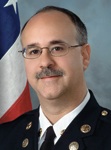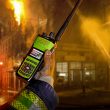Public safety needs to avoid making a deal with the devil
 We are fast approaching the sixth anniversary of Morgan O’Brien’s pronouncement — made during his keynote address at IWCE — that not only should a wireless broadband network for first responders be deployed, it also was feasible. There were a great many skeptics at the time who posed a slew of legitimate questions. Chief among them: Where would the money be found? Where would the spectrum be found? Would the public-safety sector be able to put aside its petty differences and work together for the common good?
We are fast approaching the sixth anniversary of Morgan O’Brien’s pronouncement — made during his keynote address at IWCE — that not only should a wireless broadband network for first responders be deployed, it also was feasible. There were a great many skeptics at the time who posed a slew of legitimate questions. Chief among them: Where would the money be found? Where would the spectrum be found? Would the public-safety sector be able to put aside its petty differences and work together for the common good?
Today, it appears that we are on the cusp of O’Brien’s vision coming to fruition. Seemingly there is consensus on Capitol Hill that such a network is needed. Perhaps more important, Congress seems to be willing to provide the 700 MHz D Block spectrum for this network and some level of federal funding to ensure that it is built. This is a monumental achievement, and the entire public-safety sector deserves to take a bow, particularly the tireless leaders who have walked the floors of the Capitol, knocking on doors, for months. If public safety hadn’t come together with a unified voice, the idea of this network would have died quickly.
But there appears to be a quid pro quo — isn’t there always when one is dealing with lawmakers and policymakers? — that I fear might be a deal with the devil. In order to justify ceding the D Block to public safety, some on Capitol Hill are insisting that public safety gives back some of its existing spectrum. The airwaves talked about most often are those that public safety uses for narrowband operations in the 700 MHz band.
Making that deal would be a mistake. There is little question that the wireless broadband network being contemplated would take public-safety communications into a bright new future. The mind boggles at the possibilities. Video is the application most often held up as the shining example of what’s possible, but as a fire chief I am more interested in biometric technologies that will alert incident commanders when a firefighter’s health is about to be compromised. Only through broadband will such real-time monitoring be possible.
However, there also is little question that the wireless broadband network isn’t going to reach everybody, as John Powell of the National Public Safety Telecommunications Council (NPSTC) pointed out in a column published by Urgent Communications a couple of weeks ago. Moreover, I have seen no scientific evidence that Long-Term Evolution signals will be capable of adequately penetrating buildings — particularly into sublevels such as basements and underground parking garages — something that is vital for first responders. In addition, we have seen no scientific evidence that LTE networks will be able to operate at the wattage levels we need, and we have no idea whether LTE devices will be able to operate off-network, which would be extremely important to the fire service. And let’s not forget that it will be years, perhaps decades, before the LTE network will be capable of providing mission-critical voice.
For all of these reasons, public safety would do well to proceed with caution regarding any spectrum giveback, especially those that involve its 700 MHz narrowband spectrum. Right now, we don’t have enough spectrum for our operations, and for many agencies this still will be the case even after the broadband network is deployed.
Charles Werner is chief of the Charlottesville (Va.) Fire Department, a member of SAFECOM’s executive committee, and a member of UC’s editorial advisory council.

















